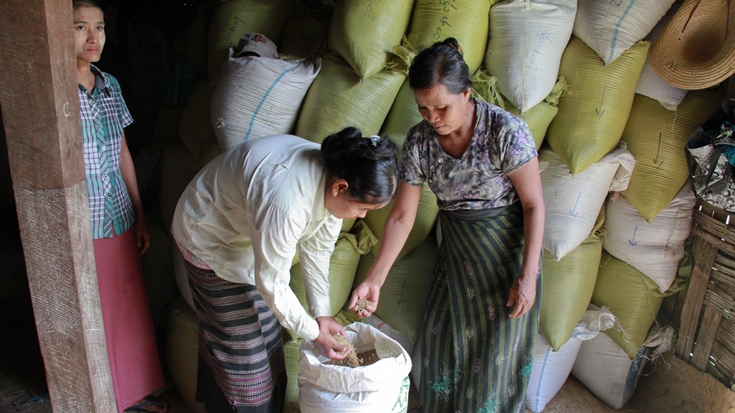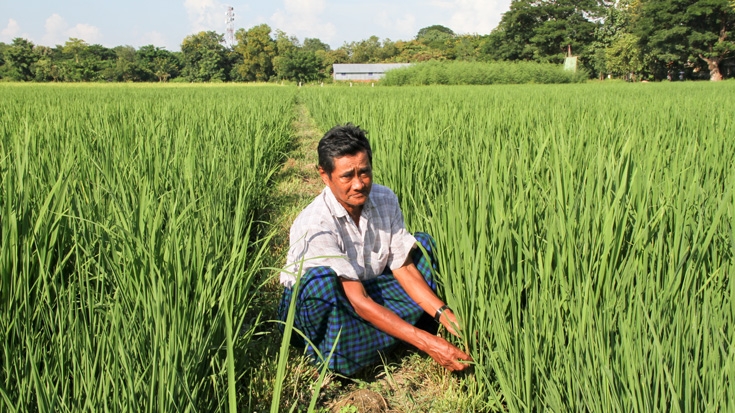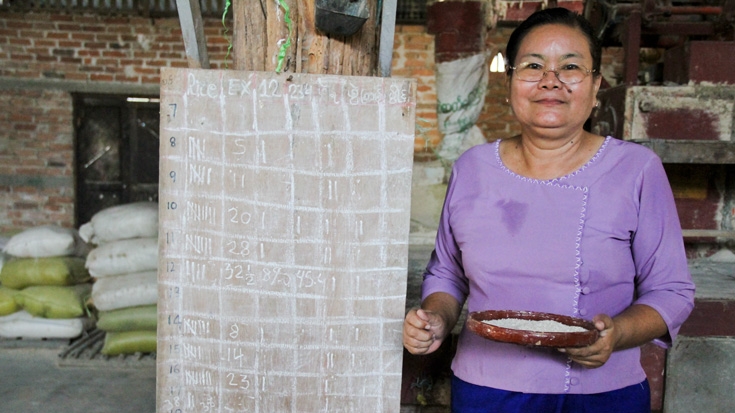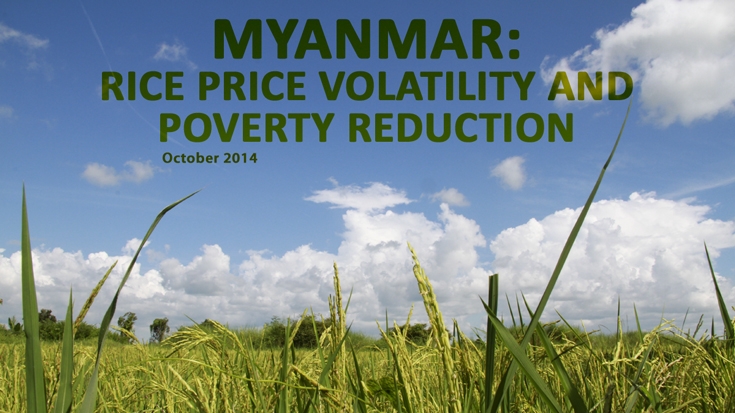Yangon, Myanmar – U Myo Myint, who graduated from a prestigious Myanmar university, once aspired to become a successful rice farmer. The Oak Kan Town farmer bought a big plot of land and- in spite of doing everything by the book and using all the local farming wisdom passed on to him- couldn’t turn a profit.
“I have a bachelor degree in Agricultural Economics and 75 acres of cultivated land,” U Myo Myint says, “However, I am poor to the bone”.
He breaks down his expenses from the last rice-growing season and reveals his meager profit: $50 per acre (or a total of $3,750 from all his 75 acres). This isn’t enough to cover his family’s food, living costs, education fees, and hospital expenses.
Most farmers in Myanmar make even less than him. U Phyo of Zeegon Town owns nine acres of land where he grows rice. With his income, he could barely make ends meet.
The vicious circle of poverty is hard to break
U Myo Myint and U Phyo both own land without an irrigation system. They have no choice but to grow rice during the monsoon season only.
Their access to additional financing is also very limited. The Myanmar Agricultural Development Bank provides credit for six months only. This means that farmers have to sell their entire rice stock immediately after harvesting--- when the prices are at their lowest--- to repay their debts. Borrowing from private lenders, although expensive, becomes necessary to sustain their business. As a result, all farmers are heavily in debt.
“All farmers are struggling with the same challenges. We are faced with very low prices after harvesting, the rising cost of rice production, and hardly any access to bank loans that are suitable for farmers like us,” said U Phyo.
Nearly half of Myanmar’s population of 51 million is engaged in rice production. A majority of them live close to the poverty line and risk falling into poverty when rice prices change unpredictably.
Rice prices are volatile
Over the last five years, rice prices have increased by 40% for customers. Changes in rice prices have also been more sudden and pronounced than those in neighboring rice export competitors, like Thailand, Vietnam, and Cambodia.
The World Bank’s “Myanmar: Rice Price Volatility and Poverty Reduction” report finds that high rice price volatility is mostly due to internal causes.
Most of the paddy rice is produced at the end of monsoon season (November and December) because of a shortage of quality seeds with different growth durations and harvest times. It’s also due to the lack of irrigation. As a result, the domestic rice market is overloaded with freshly cropped rice and prices drop.
Prices go even lower in January, when farmers have no choice but to sell their paddy. Myanmar doesn’t have enough warehouses where farmers can store their paddy rice until prices improve and allow earning bigger profits.




